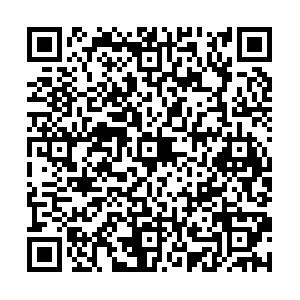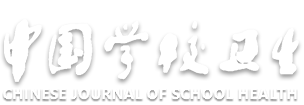Current status and associated factors of fatigue among junior high and senior high school students in Suzhou City
-
摘要:
目的 了解苏州市青少年疲劳现状并分析影响因素,为采取应对措施改善青少年疲劳状况提供参考。 方法 采用分层整群随机抽样方法,在苏州市4市6区共20所学校抽取16 109名初、高中学生进行一般资料调查及疲劳量表(FS-14)调查。 结果 青少年躯体疲劳、脑力疲劳得分及疲劳总分分别为(3.90±2.24)(2.26±1.71)(6.16±3.56)分。多元线性回归分析显示,性别、学段、自评学习成绩、学习时间、锻炼次数、锻炼时间、是否单亲、居住环境、家中是否有人常说疲劳,以及是否可以从身边人处得到支持均对青少年疲劳得分有影响(B值分别为0.35,1.16,-0.50,0.50,-0.26,-0.27,0.32,0.31,1.19,-0.49,P值均<0.01)。 结论 苏州市青少年疲劳得分相对较高。应针对青少年的疲劳问题制定相应的预防措施,减少疲劳症状对青少年身心健康造成的影响。 Abstract:Objective The purpose of this study is to investigate the current status and associated factors of fatigue among adolescents in Suzhou and to provide reference for improving adolescent fatigue. Methods A general information questionnaire and the Fatigue Scale-14 (FS-14) were administered among 16 109 junior high and senior high school students from 20 schools in six districts of four cities in Suzhou, using stratified cluster random sampling. Results The physical fatigue score, mental fatigue score and total fatigue score of the participants were (3.90±2.24) (2.26±1.71) and (6.16±3.56) points, respectively. Gender, grade, academic performance, study time, exercise frequency, exercise duration, whether from a single parent family, living environment, family members frequently reported fatigue, and social support from around showed associations with adolescent fatigue score by the multiple linear regression analysis(B=0.35, 1.16, -0.50, 0.50, -0.26, -0.27, 0.32, 0.31, 1.19, -0.49, P<0.01). Conclusion The fatigue scores of adolescents in Suzhou are relatively high. Special preventive measures should be formulated to reduce the impact of fatigue symptoms on adolescents. -
Key words:
- Fatigue /
- Regression analysis /
- Adolescent /
- Questionnaires
-
表 1 不同人口学特征青少年疲劳量表得分比较(x±s)
Table 1. Comparison of physical fatigue, mental fatigue and total fatigue score of adolescents with different characteristics(x±s)
人口学指标 选项 人数 统计值 躯体疲劳 脑力疲劳 总分 性别 男 7 743 3.62±2.26 2.20±1.67 5.82±3.55 女 8 366 4.16±2.19 2.32±1.74 6.48±3.54 t值 -15.58 -4.26 -11.83 P值 < 0.01 < 0.01 < 0.01 学段 初中生 7 629 3.31±2.08 1.97±1.59 5.28±3.29 高中生 8 480 4.43±2.25 2.53±1.77 6.95±3.61 t值 -32.54 -20.92 -30.60 P值 < 0.01 < 0.01 < 0.01 自评学习成绩 非常好 1 469 3.31±2.25 2.01±1.71 5.31±3.64 好 3 411 3.31±2.17 1.76±1.62 5.07±3.40 一般 9 123 3.82±2.20 2.16±1.68 5.98±3.49 不太好 1 782 4.23±2.24 2.58±1.71 6.81±3.54 不好 324 4.47±2.29 2.80±1.73 7.28±3.63 F值 84.10 117.19 120.21 P值 < 0.01 < 0.01 < 0.01 每日学习时间/h < 6 463 3.24±2.06 2.06±1.63 5.30±3.29 6~ 1 405 3.08±2.04 2.02±1.59 5.10±3.24 8~ 3 719 3.28±2.08 1.94±1.59 5.22±3.26 10~ 4 564 3.80±2.19 2.18±1.67 5.98±3.47 ≥12 5 958 4.60±2.23 2.26±1.71 7.20±3.62 F值 297.61 104.43 247.32 P值 < 0.01 < 0.01 < 0.01 锻炼次数/周 ≥6 2 372 3.48±2.21 2.12±1.65 5.59±3.47 3~5 5 108 3.59±2.17 2.06±1.65 5.65±3.43 1~2 5 413 3.99±2.21 2.28±1.72 6.27±3.53 < 1 1 477 4.59±2.27 2.67±1.80 7.26±3.68 0 1 739 4.53±2.24 2.63±1.75 7.16±3.59 F值 121.94 63.62 115.61 P值 < 0.01 < 0.01 < 0.01 每次锻炼时间/min ≥30 8 110 3.61±2.21 2.10±1.67 5.71±3.49 < 30 7 999 4.18±2.24 2.42±1.73 6.61±3.57 t值 -16.33 -12.23 -16.17 P值 < 0.01 < 0.01 < 0.01 是否单亲 否 15 409 3.89±2.24 2.25±1.71 6.14±3.57 是 700 4.08±2.17 2.43±1.66 6.51±3.41 t值 -2.22 -2.65 -2.67 P值 0.03 0.01 0.01 居住环境 很安静 495 3.46±2.21 1.94±1.63 5.40±3.47 比较安静 2 223 3.68±2.20 2.06±1.66 5.74±3.46 不太嘈杂 4 123 4.14±2.23 2.44±1.72 6.58±3.55 比较嘈杂 7 735 4.43±2.24 2.70±1.76 7.13±3.60 很嘈杂 1 533 4.30±2.24 2.93±1.76 7.22±3.64 F值 82.62 109.80 114.76 P值 < 0.01 < 0.01 < 0.01 家中是否有人常说疲劳 没有 9 967 3.35±2.14 1.93±1.61 5.28±3.35 有 6 142 4.24±2.23 2.47±1.74 6.71±3.57 t值 -24.94 -19.71 -25.24 P值 < 0.01 < 0.01 < 0.01 能从身边人处得到支持 完全能 538 3.20±2.15 1.74±1.57 4.94±3.32 多数能 1 941 3.72±2.20 2.05±1.66 5.77±3.46 有时候能 5 146 4.17±2.22 2.48±1.71 6.64±3.54 很少能 6 666 4.40±2.26 2.77±1.75 7.17±3.59 根本不能 1 818 4.14±2.33 2.75±1.77 6.89±3.73 F值 101.94 147.10 147.19 P值 < 0.01 < 0.01 < 0.01 表 2 青少年疲劳总分影响因素的多元线性回归分析(n=16 109)
Table 2. Multiple linear regression of factors influencing the total fatigue score in adolescents(n=16 109)
常数与自变量 B值 标准误 β值 t值 P值 常数项 3.52 0.23 - 15.11 < 0.01 性别 0.35 0.05 0.05 6.72 < 0.01 学段 1.16 0.05 0.16 21.75 < 0.01 自评学习成绩 -0.50 0.03 -0.12 -16.10 < 0.01 学习时间 0.50 0.03 0.15 20.21 < 0.01 锻炼次数 -0.26 0.02 -0.09 -11.36 < 0.01 锻炼时间 -0.27 0.05 -0.04 -5.07 < 0.01 是否单亲 0.32 0.13 0.02 2.55 0.01 居住环境 0.31 0.03 0.08 11.41 < 0.01 家中是否有人常说疲劳 1.19 0.05 0.16 22.68 < 0.01 能从身边人处得到支持 -0.49 0.03 -1.31 -17.82 < 0.01 -
[1] 李峰, 韩晨霞, 吴凤芝, 等. 疲劳的现代研究[J]. 中国科学: 生命科学, 2016, 46(8): 903. https://www.cnki.com.cn/Article/CJFDTOTAL-JCXK201608002.htmLI F, HAN C X, WU F Z, et al. Modern research on fatigue[J]. Sci Sinica(Vitae), 2016, 46(8): 903. https://www.cnki.com.cn/Article/CJFDTOTAL-JCXK201608002.htm [2] ASPRUSTEN T T, SLETNER L, WYLLER V. Are there subgroups of chronic fatigue syndrome?An exploratory cluster analysis of biological markers[J]. J Transl Med, 2021, 19(1): 48. doi: 10.1186/s12967-021-02713-9 [3] BAKKEN I J, TVEITO K, GUNNES N, et al. Two age peaks in the incidence of chronic fatigue syndrome/myalgic encephalomyelitis: a population-based registry study from Norway 2008-2012[J]. BMC Med, 2014, 12(1): 167. http://pubmedcentralcanada.ca/pmcc/articles/PMC4189623/?report=classic [4] CHALDER T, BERELOWITZ G, PAWLIKOWSKA T, et al. Development of a Fatigue Scale[J]. J Psychosom Res, 1993, 37(2): 147-153. doi: 10.1016/0022-3999(93)90081-P [5] 张作记. 行为医学量表手册[M]. 北京: 中华医学电子音像出版社, 2005.ZHANG Z J. Handbook of Behavioral Medicine Scale[M]. Beijing: China Medical Electronic Audiovisual Publishing House, 2005. [6] 王天芳, 薛晓琳. 疲劳自评量表[J]. 中华中医药杂志, 2009, 24(3): 348-349. https://www.cnki.com.cn/Article/CJFDTOTAL-BXYY200903028.htmWANG T F, XUE X L. Fatigue self-rating scale[J]. Chin J Tradit Chin Med Pharm, 2009, 24(3): 348-349. https://www.cnki.com.cn/Article/CJFDTOTAL-BXYY200903028.htm [7] 王天芳, 薛晓琳. 疲劳自评量表的理论构建及其研制[J]. 北京中医药大学学报, 2007, 30(4): 221-223. doi: 10.3321/j.issn:1006-2157.2007.04.001WANG T F, XUE X L. Theoretical construction and development of fatigue self-rating scale[J]. J Beijing Univ Tradit Chin Med, 2007, 30(4): 221-223. doi: 10.3321/j.issn:1006-2157.2007.04.001 [8] 薛晓琳, 王天芳, 于春光, 等. 疲劳自评量表的信, 效度评价[J]. 中国中西医结合杂志, 2008, 28(6): 550. doi: 10.3321/j.issn:1003-5370.2008.06.019XUE X L, WANG T F, YU C G, et al. Reliability and validity evaluation of fatigue self-rating scale[J]. Chin J Integrat Tradit Western Med, 2008, 28(6): 550. doi: 10.3321/j.issn:1003-5370.2008.06.019 [9] JING M J, LIN W Q, WANG Q, et al. Reliability and construct validity of two versions of Chalder Fatigue Scale among the general population in Mainland China[J]. Int J Environ Res Public Health, 2016, 13(1): 147. doi: 10.3390/ijerph13010147 [10] WONG W S, FIELDING R. Construct validity of the Chinese version of the Chalder Fatigue Scale in a Chinese community sample[J]. J Psychosom Res, 2010, 68(1): 89-93. doi: 10.1016/j.jpsychores.2009.05.008 [11] SHI J Y, SHEN J, XIE J, et al. Chronic fatigue syndrome in Chinese middle-school students[J]. Medicine, 2018, 97(4): e9716. doi: 10.1097/MD.0000000000009716 [12] 孙彩虹, 夏薇, 张昭, 等. 哈尔滨市中学生慢性疲劳综合征现况及影响因素分析[J]. 中国学校卫生, 2009, 30(11): 968-970. http://www.cjsh.org.cn/article/id/zgxxws201406043SUN C H, XIA W, ZHANG Z, et al. Analysis of the current situation and influencing factors of chronic fatigue syndrome among middle school students in Harbin[J]. Chin J Sch Health, 2009, 30(11): 968-970. http://www.cjsh.org.cn/article/id/zgxxws201406043 [13] 王天芳, 张翠珍, 刘雁峰. 慢性疲劳综合征病人的疲劳、抑郁、焦虑与生活事件的特点及其相关性分析[J]. 中国行为医学科学, 2000, 9(2): 84-86. doi: 10.3760/cma.j.issn.1674-6554.2000.02.002WANG T F, ZHANG C Z, LIU Y F, et al. Characteristics and correlation analysis of fatigue, depression, anxiety and life events in patients with chronic fatigue syndrome[J]. Chin J Behav Med Sci, 2000, 9(2): 84-86. doi: 10.3760/cma.j.issn.1674-6554.2000.02.002 [14] 庞静, 李英华, 陶茂萱. 亚健康与慢性疲劳综合征的人群分布特征及危险因素研究进展[J]. 中国健康教育, 2010, 26(4): 303-305. https://www.cnki.com.cn/Article/CJFDTOTAL-ZGJK201004020.htmPANG J, LI Y H, TAO M X. Research progress on population distribution characteristics and risk factors of sub-health and chronic fatigue syndrome[J]. Chin J Health Educ, 2010, 26(4): 303-305. https://www.cnki.com.cn/Article/CJFDTOTAL-ZGJK201004020.htm [15] 申志梅. 中学生慢性疲劳的成因及其对"体测"成绩的影响[D]. 西安: 陕西师范大学, 2017.SHEN Z M. The causes of chronic fatigue of middle school students and its influence on the performance of "physical test"[D]. Xi'an: Shaanxi Normal University, 2017. [16] 申国勇, 闵瑞欣, 王子楠, 等. 临潼区中学生慢性疲劳综合症分布及其运动后尿常规检测分析[J]. 辽宁体育科技, 2017, 39(2): 43-46. doi: 10.3969/j.issn.1007-6204.2017.02.012SHEN G Y, MIN R X, WANG Z N, et al. The distribution of chronic fatigue syndrome and analysis of urine routine test after exercise of middle school students in Lintong district[J]. Liaoning Sport Sci Technol, 2017, 39(2): 43-46. doi: 10.3969/j.issn.1007-6204.2017.02.012 [17] ISAK E, JOHAN S, GÖRAN W, et al. Fatigue in the general population-associations to age, sex, socioeconomic status, physical activity, sitting time and self-rated health: the northern Sweden MONICA study 2014[J]. BMC Public Health, 2017, 17(1): 654. doi: 10.1186/s12889-017-4623-y [18] 张云婷, 马生霞, 陈畅, 等. 中国儿童青少年身体活动指南[J]. 中国循证儿科杂志, 2017, 12(6): 401-409. doi: 10.3969/j.issn.1673-5501.2017.06.001ZHANG Y T, MA S X, CHEN C, et al. A guide to physical activity for children and adolescents in China[J]. Chin J Pediar, 2017, 12(6): 401-409. doi: 10.3969/j.issn.1673-5501.2017.06.001 [19] 郭强. 中国儿童青少年身体活动水平及其影响因素的研究[D]. 上海: 华东师范大学, 2016.GUO Q. A study on the physical activity level and influencing factors of Chinese children[D]. Shanghai: East China Normal University, 2016. [20] GUTHOLD R, STEVENS G A, RILEY L M, et al. Global trends in insufficient physical activity among adolescents: a pooled analysis of 298 population-based surveys with 1.6 million participants[J]. Lancet Child Adolesc Health, 2020, 4(1): 23-35. [21] GODFREY E, CLEARE A, CODDINGTON A, et al. Chronic fatigue syndrome in adolescents: do parental expectations of their child's intellectual ability match the child's ability?[J]. J Psychosom Res, 2009, 67(2): 165-168. doi: 10.1016/j.jpsychores.2009.02.004 [22] CRAWLEY E, HUGHES R, NORTHSTONE K, et al. Chronic disabling fatigue at age 13 and association with family adversity[J]. Pediatrics, 2012, 130(1): e71-e79. http://www.ncbi.nlm.nih.gov/pubmed/22711716 [23] RANGEL L, GARRALDA M E, JEFFS J, et al. Family health and characteristics in chronic fatigue syndrome, juvenile rheumatoid arthritis, and emotional disorders of childhood[J]. J Am Acad Child Adolesc Psychiatry, 2005, 44(2): 150-158. doi: 10.1097/00004583-200502000-00007 期刊类型引用(28)
1. 张凤云,宋逸,张琳,罗春燕,DU Wei,董彬. 落实学校课桌椅标准 促进中小学生健康成长. 中国学校卫生. 2025(03): 305-309 .  本站查看
本站查看2. 杨海霞,牛永茂,江祈雨,裴正春,曾小蝶,黄婧,王晓花. 海口市12所中小学校教学环境卫生现状调查. 中国初级卫生保健. 2024(02): 93-95 .  百度学术
百度学术3. 赵金辉,秦冉,王文昕,许惠玉,高若伊,郭欣. 北京市2016—2020年中小学校教室卫生学评价. 中国学校卫生. 2024(03): 431-436+442 .  本站查看
本站查看4. 谭雅卿,王非,胡冀,李开宇,陈艳华. 2021年湖南省中小学校教学环境卫生现状. 实用预防医学. 2024(05): 551-555 .  百度学术
百度学术5. 胡玉环,汤红梅,韩雁,郭琪,史慧静,曹佳敏,温晓飒. 上海市闵行区中小学学生视力与教室视觉环境状况的关系研究. 上海预防医学. 2024(03): 249-254 .  百度学术
百度学术6. 高善西,秦萌,吴若瑶. 上海市奉贤区2022年中小学校教室视觉环境监测分析. 健康教育与健康促进. 2024(02): 181-183 .  百度学术
百度学术7. 杨艰萍,林建海,李萍,郑朝军,王亚宁,刘佳佳,毛洁. 上海市中小学教室采光照明现况及监管效果分析. 中国学校卫生. 2024(06): 780-783+787 .  本站查看
本站查看8. 蒋丹凤,李萍,姚小玉,倪小咪. 2018—2022年常州市武进区中小学校教学环境卫生状况调查. 江苏预防医学. 2024(03): 394-396 .  百度学术
百度学术9. 李嘉凌,王翰佳,王莹莹. 2021—2023年上海市某区中小学校教室照明卫生状况分析. 中国校医. 2024(06): 412-415 .  百度学术
百度学术10. 陈胜云,高慧,孙春晓. 东营市中小学校教学生活环境卫生检测结果分析. 中国城乡企业卫生. 2024(10): 26-29 .  百度学术
百度学术11. 李敏敏,赵静珺,王妍昕,米白冰,贺文香,史伟. 陕西省中小学校教室环境与学生筛查性近视的关联. 中国学校卫生. 2024(10): 1492-1496 .  本站查看
本站查看12. 余军洁,张元群,万琴,许艳菊,文雅婷. 2022—2023年重庆市巴南区中小学校教室环境卫生监测结果分析. 中国校医. 2024(09): 688-690+711 .  百度学术
百度学术13. 杨月,刘辉,叶盛,卢雪蕾,刘黎. 南京市2021—2023年中小学校教学和生活环境卫生监测结果分析. 江苏卫生保健. 2024(06): 495-498 .  百度学术
百度学术14. 欧阳芳,谭晖,章丽,杨玉娟,伊鲁波,王震维,阮一凡. 上海市中小学校可调式和固定式课桌椅符合现况. 中国学校卫生. 2023(02): 287-290 .  本站查看
本站查看15. 代鹏,易秉涛,文江,沈阳强,朱小丽,陈飒. 2021年宁陕县7所学校教学环境卫生监测结果分析. 中国校医. 2023(03): 207-210 .  百度学术
百度学术16. 黄琦,杨婕,杨文漪,张锡彦,项耀,王欣,王艳. 2021年江苏省中小学校教学和生活环境卫生现况评价. 江苏预防医学. 2023(02): 212-214 .  百度学术
百度学术17. 吴晓刚,赵曦曦,杨硕,刘冰,刘虹涛. 吉林省中小学教室采光照明对学生近视的影响. 中国卫生工程学. 2023(03): 332-334 .  百度学术
百度学术18. 曲爽笑,杨东玲,黄生垒,齐文娟,黄雨婷,何鲜桂,王菁菁,罗春燕. 中小学校教学环境及与筛查性近视关联的多水平模型分析. 中国学校卫生. 2023(08): 1256-1260 .  本站查看
本站查看19. 孙重秀. 金山区2022年学校教室内环境卫生监测结果分析. 健康教育与健康促进. 2023(05): 520-522 .  百度学术
百度学术20. 强馨元,吴明,高青,叶茜雯,刘懿卿. 2021年辽宁省中小学校园环境卫生监测结果分析. 中国公共卫生管理. 2023(06): 865-867 .  百度学术
百度学术21. 杨华,张敏. 普洱市18所中小学校教室环境卫生状况调查. 职业卫生与病伤. 2022(02): 120-124+127 .  百度学术
百度学术22. 许凤鸣,王丽茹,李凤娟,王旭,王延鑫,刘晶晶,张书芳. 2020年河南省中小学教室环境卫生状况调查分析. 中国卫生监督杂志. 2022(01): 71-75 .  百度学术
百度学术23. 赵金辉,秦冉,郭欣,赵海. 北京市2017—2020年中小学校环境健康影响因素分析. 中国学校卫生. 2022(07): 1100-1103 .  本站查看
本站查看24. 李江涛,孙芳,赫永虎,张志新,缪忠翠. 中小学教室照明与学生视力不良的调查分析. 甘肃医药. 2022(08): 748-749+757 .  百度学术
百度学术25. 王美琳,丁婷婷,李巧敏,时瑞霞,李力,夏双爽,吕淑珍,陈志强. 2020年河北省部分中小学校教学环境卫生现状分析. 中国预防医学杂志. 2022(09): 672-675 .  百度学术
百度学术26. 何莹,董瑞强,崔兰梅,付晓博,贾艳阳. 2020-2021年北京市房山区中小学校教学环境监测结果分析. 河南预防医学杂志. 2022(11): 838-841 .  百度学术
百度学术27. 庄茂强,张迎修,李素云,褚遵华. 山东省2019年中小学校教学环境调查. 现代预防医学. 2021(19): 3519-3523 .  百度学术
百度学术28. 张珊,栾奕钦. 上海市黄浦区中小学教室光环境现状研究. 健康教育与健康促进. 2021(06): 607-609 .  百度学术
百度学术其他类型引用(0)
-

 点击查看大图
点击查看大图
计量
- 文章访问数: 826
- HTML全文浏览量: 353
- PDF下载量: 66
- 被引次数: 28






 下载:
下载: